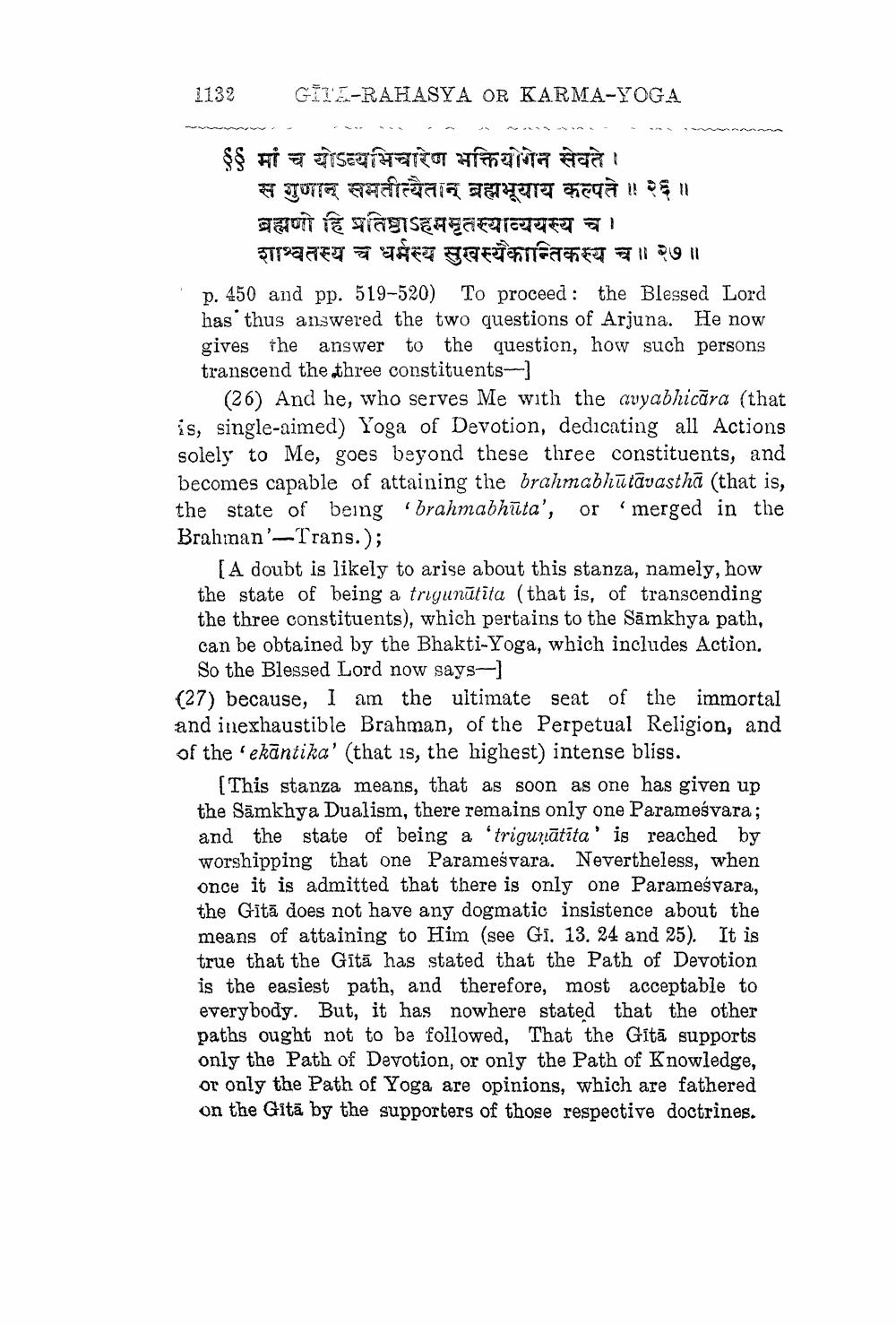________________
1132
GITE-RAHASYA OR KARMA-YOGA
६९ मां च योऽव्यभिचारेण भक्तियोगेन सेवते।
TUTTE SHEHE THRITT Sca! 11 TUTTI SENSEAT FITTFTTI
शाश्वतस्य च धर्मस्य सुखस्यकान्तिकस्य च ॥ २७॥ p. 450 and pp. 519-520) To proceed: the Blessed Lord has thus answered the two questions of Arjuna. He now gives the answer to the question, how such persons transcend the three constituents-]
(26) And he, who serves Me with the avyabhicāra (that is, single-aimed) Yoga of Devotion, dedicating all Actions solely to Me, goes beyond these three constituents, and becomes capable of attaining the brahmabhūtāvastha (that is, the state of being 'brahmabhūta', or 'merged in the Brahman'-Trans.);
[A doubt is likely to arise about this stanza, namely, how the state of being a trigunūtīta (that is, of transcending the three constituents), which pertains to the Samkhya path, can be obtained by the Bhakti-Yoga, which includes Action,
So the Blessed Lord now says(27) because, I am the ultimate seat of the immortal and inexhaustible Brahman, of the Perpetual Religion, and of the 'ekāntika' (that is, the highest) intense bliss.
(This stanza means, that as soon as one has given up the Sāmkhya Dualism, there remains only one Parameśvara; and the state of being a 'trigurātīta' is reached by worshipping that one Parameśvara. Nevertheless, when once it is admitted that there is only one Parameśvara, the Gītā does not have any dogmatic insistence about the means of attaining to Him (see Gi. 13. 24 and 25). It is true that the Gītā has stated that the Path of Devotion is the easiest path, and therefore, most acceptable to everybody. But, it has nowhere stated that the other paths ought not to be followed, That the Gītā supports only the Path of Devotion, or only the Path of Knowledge, or only the Path of Yoga are opinions, which are fathered on the Gitā by the supporters of those respective doctrines.




